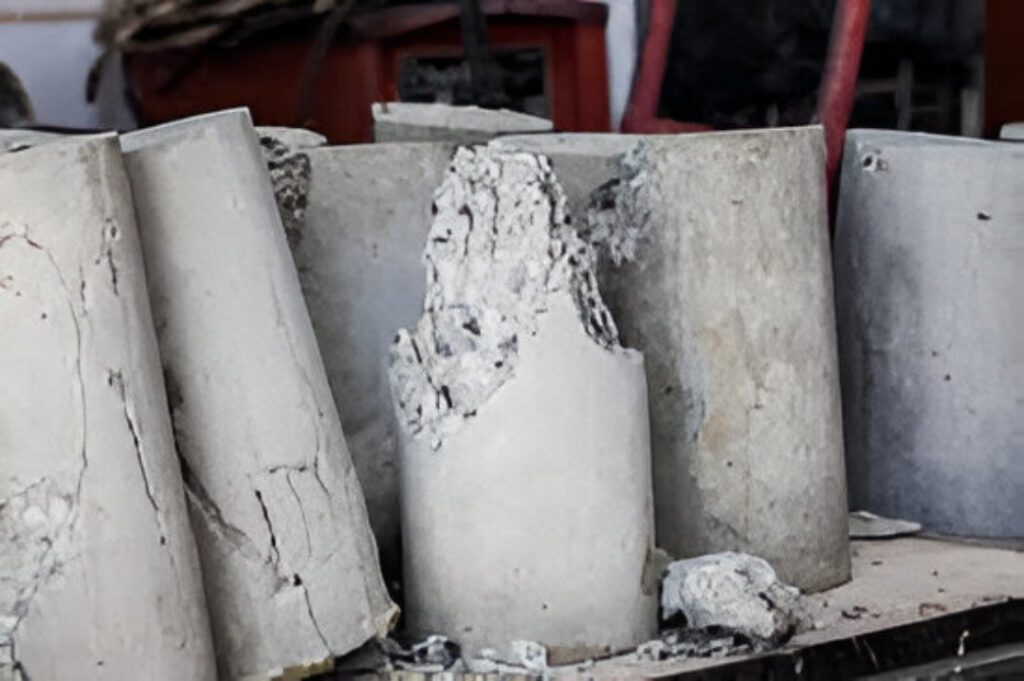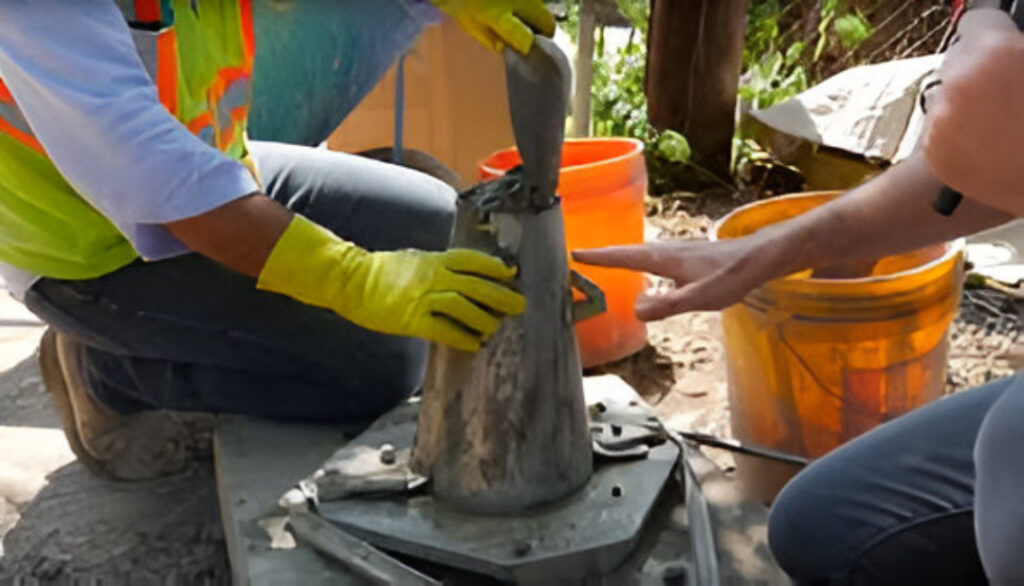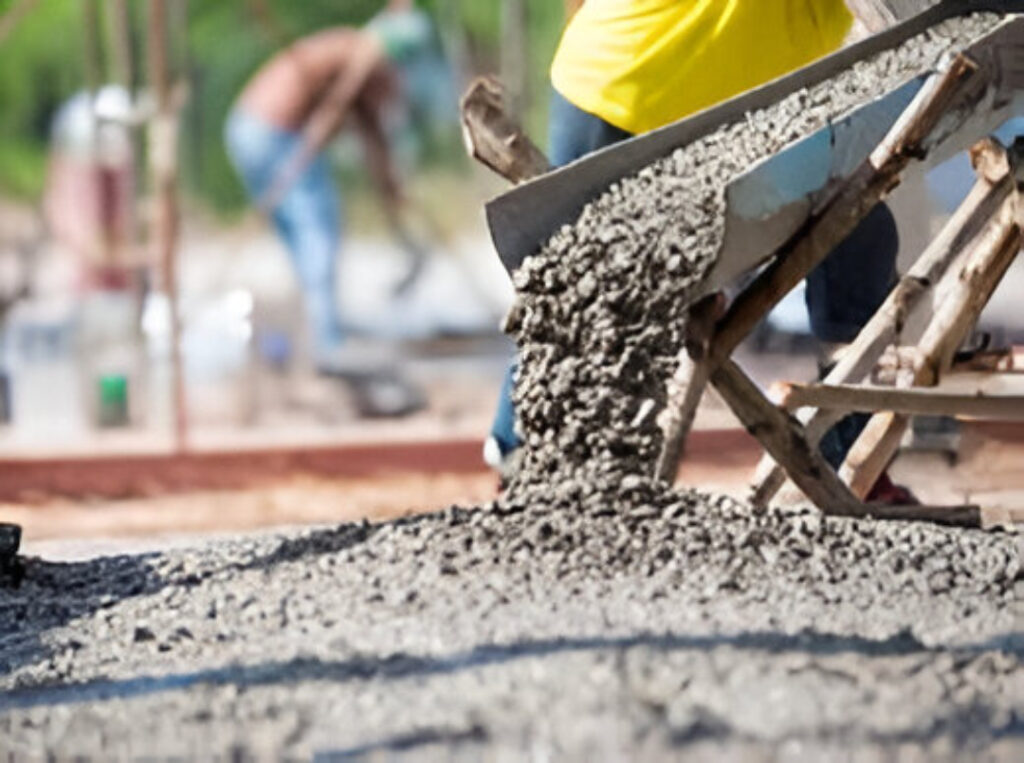Concrete is the most widely used construction material in the world, forming the backbone of modern infrastructure. From skyscrapers to highways, residential buildings to industrial warehouses, concrete is everywhere. However, the strength, durability, and performance of concrete depend on its quality, which must be verified through systematic testing. At HiTech Civil Test Labs, we emphasize the critical role of concrete testing in ensuring quality construction that stands the test of time.

Why Concrete Testing Is Essential?
Concrete is a complex composite made from cement, water, fine and coarse aggregates, and sometimes admixtures. Each of these components can affect the final outcome. Even small variations in materials, mix proportions, or curing conditions can lead to structural deficiencies. Concrete testing eliminates uncertainty by providing data-driven assurance of the material’s strength, durability, and consistency.
Some of the primary reasons concrete testing is essential in quality construction include:
- Ensuring Structural Safety: Testing determines whether the concrete can bear the intended loads and resist environmental stresses.
- Complying with Standards: Construction projects must meet national and international codes such as IS 456 and IS 516 in India.
- Detecting Deficiencies Early: Poor-quality concrete can lead to cracks, spalling, or structural failure. Early detection helps avoid costly repairs.
- Optimizing Mix Design: Testing allows engineers to adjust the mix for strength, workability, or environmental conditions.
- Building Client Confidence: Certified test reports from trusted labs like HiTech Civil Test Labs serve as proof of quality for clients and regulatory bodies.

Key Concrete Tests in the Construction Process
Concrete testing spans various stages—before placement (fresh concrete), during construction (on-site testing), and after curing (hardened concrete). Below are the most commonly used tests and their purposes.
1. Slump Test (Workability Test)
The slump test is used to assess the consistency and workability of fresh concrete. It helps determine whether the concrete mix has sufficient flow to be placed and compacted without segregation.
- Significance: Ensures ease of placement without compromising strength.
- Performed At: Construction site, during pouring.
- Standards: IS 1199
2. Compressive Strength Test
This is the most critical test, measuring the concrete’s ability to withstand load without failure. Concrete cubes or cylinders are cast and cured, then tested after 7, 14, or 28 days.
- Significance: Assesses the load-bearing capacity of concrete.
- Performed At: HiTech Civil Test Labs or on-site with mobile labs.
- Standards: IS 516
3. Flexural Strength Test
Flexural strength, or modulus of rupture, measures the concrete’s ability to resist bending and is important for structures like pavements and slabs.
- Significance: Evaluates tensile strength under flexural loading.
- Performed At: Laboratory environment.
- Standards: IS 516
4. Air Content Test
Air entrainment helps concrete resist freeze-thaw cycles. This test ensures the air content is within permissible limits
5. Rapid Chloride Permeability Test (RCPT)
This test checks the permeability of concrete to chloride ions, which can cause corrosion in steel reinforcement over time.
- Significance: Indicates long-term durability and resistance to corrosion.
- Performed At: Specialized testing labs like Hi-Tech Civil Test Labs.
6. Core Cutting and Testing
In cases where in-situ concrete quality needs to be evaluated after casting, cores are drilled from the structure and tested for compressive strength.
- Significance: Validates in-place concrete strength.
- Standards: IS 456

Factors Influencing Concrete Quality
Concrete testing is not just about checking the final product—it also helps control variables that influence quality:
- Water-Cement Ratio: Too much water weakens concrete; testing helps monitor this balance.
- Aggregate Quality: Proper grading, cleanliness, and size of aggregates affect strength.
- Mix Proportion: The correct ratio of cement, water, sand, and aggregates is essential.
- Curing Conditions: Improper curing leads to low strength and cracking.
- Weather Conditions: Temperature and humidity during placement can affect setting and strength development.
By continuously testing and monitoring these variables, HiTech Civil Test Labs supports contractors and engineers in delivering projects that meet the highest standards of quality.
Benefits of Concrete Testing for Stakeholders
Concrete testing benefits every stakeholder in the construction process:
- Engineers and Architects: Receive accurate data to validate design assumptions.
- Contractors: Avoid rework and ensure compliance with safety regulations.
- Clients and Developers: Gain confidence in the durability and longevity of their investment.
- Regulatory Authorities: Get certified reports for audit and approval purposes.
Why Choose Hi-Tech Civil Test Labs for Concrete Testing?
Hi-Tech Civil Test Labs is a trusted name in material testing, with specialized equipment, trained technicians, and NABL-compliant procedures. We offer:
- On-site and lab-based testing services
- Timely reporting and certified documentation
- Testing in accordance with IS, ASTM, and BS standards
- Custom testing solutions for unique project requirements
Our commitment is not just to test materials, but to empower our clients with insights that enhance construction quality and reduce long-term risk.
In modern construction, quality assurance is no longer optional—it is a necessity. Concrete testing plays a pivotal role in ensuring that every building, bridge, or roadway is built on a solid foundation of verified strength and performance. With the help of professional material testing partners like HiTech Civil Test Labs, contractors and engineers can build smarter, safer, and more durable structures.
Let quality be the cornerstone of your next project—start with trusted concrete testing.
